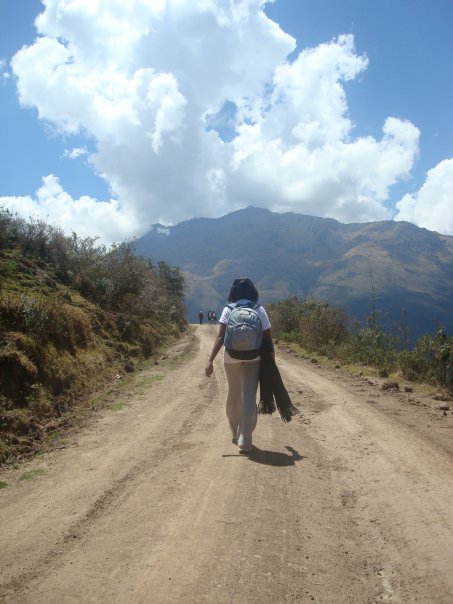
The bus ride from Lima to Ayacucho was long and bumpy. Although it was hard to make much of the night's journey, I was able to feel every turn of the dirt road as it twisted around the mountain. It was breaking dawn as we descended into Ayacucho, and the morning's bustle was in full swing. As I stepped off the bus, I was immediately greeted by taxi drivers, hotel recruits, and women with the day's freshest batch of 'pan chapla'- all vying to offer me their best deals. With two months of Spanish lessons at hand, I was knowingly ill prepared for this visit, but eager to begin my adventure in the Andes.
After spending a few months in Lima, I had come to Ayacucho to become acquainted with ' life in the field'. I was here to hear stories, make observations and try to understand the everyday life of the individuals living in this highland region. In light of a history of sustained trauma and political violence, I was hoping to understand what 'resilience and recovery' meant for these individuals.
Ayacucho, a district of the Southern Andes was an area that was the hub of the Sendero Luminoso (Shining Path guerrillas) insurgency in the 1980s. During this time, the local indigenous populations were massively exposed to some of the most extreme forms of violence. It was concluded that of the total number of people killed or disappeared in this period, three quarters of the victims were indigenous Quechua speakers (CVR, 2003). Since the capture and killing of Shining Path leaders, political violence has decreased significantly in the area. However, the long-term implications of political violence and contemporary wars on local, indigenous and displaced populations of this region are yet to be completely understood.
In recent years, important strides have been made to define and document local idioms of distress in indigenous populations exposed to trauma and organized violence in the highlands. However, a gap still exists in trying to understand culturally specific patterns of recovery and coping for the populations who were affected by war and violence. What does resilience mean to these individuals, families and communities of highland Peru? How is it expressed? Are there locally available resources within communities that can promote healing and adaptation?
These questions in mind, I headed to the nearby communities of Cangallo and Cupschi. It is here one can experience typical ‘campo’ life. I spent my days in Cangallo observing work done by the local ‘defensoria’ and working with two individuals, Lorena and Jorge, who worked with the Peruvian Institute of Education in Human Rights and Peace. It was during this time that I had an encounter with an elderly Quechua-speaking man who gave me insight of what 'resilience' means for those living in the Andes.
He walked into the office one afternoon, and requested that the team come and take a look at his house. The rainy season had begun in the highlands, and he was complaining that his roof needed repair and was requesting some financial help from the defensoria. So, Jorge and I followed this man up the mountain. He looked to be in his mid 80's, but was able to traverse that mountain with the stamina and grace of a 14-year old boy. When we reached his house, it was quite clear that it was in need of major reconstruction. The thatched roof was barely sitting on the walls of his hut.
Concerned about his wellbeing, and fairly ignorant about Andean life, I asked the man why he chose to make the four hour journey back and forth each day, and why he didn’t choose to move into the town. He simply answered “You can’t take an old tree by its roots and move it to new land and expect it to survive.. this is my home, this is my tradition”.
These and many similar stories have shaped my experience in Peru and guided my research for my upcoming fieldwork. There is evidence in the highlands that traumatic events do not always result in psychiatric distress. Individuals, as well as societies differ in the ways they experience and process events. As I reflect on my experiences in the highlands, I look forward to my return to Peru this fall to begin my exploratory study on resilience.